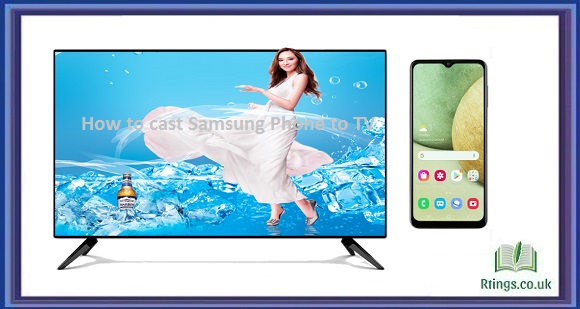In the rapidly evolving landscape of technology, smart features have become an integral part of various electronic devices, including LED and LCD TVs, monitors, and more. These features offer a blend of connectivity, convenience, and entertainment, transforming how we interact with our screens. This comprehensive exploration’ll delve into smart features, their functionalities, and their impact on our daily lives.
What are Smart Features?
Smart features refer to integrating internet connectivity and interactive capabilities into electronic devices, enabling them to access online content, perform various tasks, and offer enhanced user experiences beyond traditional functions. These features have transcended from smartphones to larger screens, such as LED and LCD TVs, monitors, and projectors.
Streaming Services and Content Access
One of the most prominent smart features is accessing streaming services directly from your device. Smart TVs and monitors come equipped with apps like Netflix, Hulu, Amazon Prime Video, and YouTube, allowing users to stream their favorite movies, TV shows, and videos seamlessly. This eliminates the need for external devices like set-top boxes or streaming sticks, streamlining the viewing experience.
App Integration
Smart features enable the installation of various applications, similar to those found on smartphones. This ranges from social media apps to weather forecasts, news updates, and even games. Users can customize their screens with their frequently used apps, effectively transforming their TV or monitor into a hub for diverse activities.
Voice Control
Voice control functionality, powered by virtual assistants like Amazon Alexa, Google Assistant, or Apple’s Siri, has made its way into smart TVs and monitors. This allows users to navigate menus, search for content, adjust settings, and even control smart home devices using voice commands, adding a new layer of convenience to the viewing experience.
Screen Mirroring and Casting
Smart features enable seamless screen mirroring or casting from smartphones, tablets, and computers. This allows users to display their device’s content on a larger screen, facilitating presentations, share photos and videos with friends and family, or enjoying mobile games on a grander scale.
Internet Browsing
Some smart TVs and monitors offer basic internet browsing capabilities, enabling users to access websites directly from their screens. While less robust than dedicated web browsers, this feature is handy for quick searches, checking email, or accessing specific online content.
Smart Home Integration
With the rise of the Internet of Things (IoT), many smart TVs and monitors can be integrated into a broader smart home ecosystem. This allows users to control lights, thermostats, security cameras, and other smart devices directly from their screens, offering centralized control and convenience.
Firmware Updates and Improvements
Smart features also facilitate firmware updates that improve performance, security enhancements, and new device functionalities over time. This ensures that your device stays current and offers the latest features and optimizations.
Gaming and Entertainment
For gamers, smart features can enhance the gaming experience. Some gaming monitors offer low input lag, high refresh rates, and even specific gaming modes that optimize visuals for different genres. Smart TVs with dedicated gaming modes can also reduce latency and improve response times, catering to casual and competitive gamers.
Parental Controls and Content Filtering
Smart features often include parental controls, allowing parents to restrict access to certain apps, websites, or content based on age ratings. This helps create a safer and more controlled viewing environment for children.
Data Privacy and Security
While smart features offer numerous benefits, data privacy and security are important considerations. Devices with internet connectivity may collect user data, underscoring the importance of reviewing privacy policies and settings to ensure personal information is handled securely.
Conclusion
Smart features have revolutionized how we interact with our screens, extending the capabilities of LED and LCD TVs, monitors, and other display devices. From streaming services to voice control, these features offer convenience, connectivity, and entertainment at our fingertips. As technology evolves, we can expect even more innovative smart features that enhance our digital lives while ensuring a seamless and immersive experience.
Frequently Asked Questions (FAQs)
What are smart features in devices?
Smart features encompass advanced functionalities embedded in devices, utilizing connectivity and intelligence. These features harness technologies like the Internet of Things (IoT) and artificial intelligence (AI) to offer convenience and customization. Examples include smart home devices that automate tasks, wearables that track health, and voice assistants driven by AI. Smart features enhance efficiency, personalization, and energy conservation. However, user privacy and security must be considered. As technology advances, smart features are poised to shape the future by creating interconnected, intelligent devices that adapt to user preferences and anticipate needs.
What is the difference between HDMI and DisplayPort?
HDMI (High-Definition Multimedia Interface) and DisplayPort are two common video and audio connectivity options. While both transmit high-quality audio and video signals, there are differences. HDMI is widely used for consumer electronics, supporting 4K resolution and audio return channel (ARC) for home theaters. DisplayPort, favored in professional settings, offers better bandwidth for higher resolutions and refresh rates. It’s common on gaming monitors and graphics cards. DisplayPort also supports daisy-chaining multiple monitors. Choosing between the two depends on your device compatibility, usage, and desired features. Some monitors and graphics cards support both, ensuring flexibility for various setups.
What is the significance of color gamut in monitors?
Color gamut refers to the range of colors a monitor can display. Monitors with wider color gamuts can reproduce a larger variety of colors, producing more accurate and vibrant visuals. The most common color gamuts include sRGB, which covers a standard range of colors, and AdobeRGB, which has a broader spectrum often used by professionals. Wide color gamuts are crucial for graphic design, photo editing, and video production, where color accuracy is paramount. However, monitors with standard color gamuts may suffice for general usage and gaming. When selecting a monitor with the appropriate color gamut, it’s essential to consider your intended use and the content you’ll be working with.






